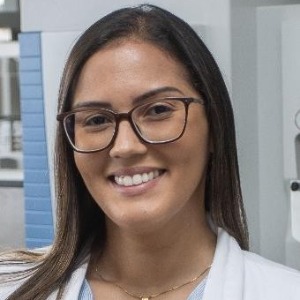Title : The impact of slow pyrolysis bio oil as co processing load in delayed coking unit based on chemical characterization of light gas oils via GC×GC TOFMS
Abstract:
Bio-oil presents a significant opportunity to reduce fossil carbon emissions by up to 70 % during the production of renewable products. Co-processing bio-oil in fossil refining processes can diversify the energy matrix, aligning with the goals set forth by the Paris Agreement for energy transition, without the need to alter existing industrial facilities. This study investigates the effects on diesel/light gas oil composition, after co-processing slow pyrolysis bio-oil with vacuum residue in a delayed coking unit. A comprehensive chemical characterization was performed at the molecular level using comprehensive two- dimensional gas chromatography coupled to time-of-flight mass spectrometry (GC×GC-TOFMS). The analyses included a 100% fossil-based light gas oil (LGO) and light gas oils obtained from co-processing with 5% (LGO5) and 10% (LGO10) slow pyrolysis bio-oil. GC×GC-TOFMS injections were performed using DB- 5/DB-17 column set and samples were diluted in a mixture of deuterated standards to internal standardization. Data acquisition and processing were performed with ChromaTOF® software, considering only compounds with a similarity above 80% and a 100:1 signal-to-noise ratio. LGO5 and LGO10 naturally separated into two phases due to density differences and were analyzed separately. The less dense fractions of LGO5 and LGO10 presented profiles similar to LGO, containing predominantly paraffins, olefins and non- aromatic and aromatic cyclic hydrocarbons. Among these classes, alkylcyclopentanes that were observed in the C9-C17 range in LGO (30.9 mg.g-1), increased to C9-C20 in LGO5 (40.5 mg.g-1) and to C8-C26 in LGO10 (64.9 mg.g-1). This demonstrates the biogenic contribution to the LGO composition after the addition of bio- oil. In contrast, the denser fractions of LGO5 and LGO10 contain aromatic hydrocarbons such as alkylbenzenes and alkylnaphthalenes, but are mostly composed of oxygenates, including cyclic ketones (such as cyclopentenones), which are used as diesel additives to improve the cetane number of diesel. Phenols, benzenediols and sugars were also identified. These fractions can be reintroduced into the delayed coking unit or can be co-processed with other heavier petroleum-derived streams in hydrotreating units, as fluidized catalytic cracking (FCC), to transform these compounds into products of greater economic interest or can also be used as a source of chemical inputs in future biorefinery plants. The application of the GC×GC- TOFMS technique to elucidate the individual molecular chemical composition of the samples revealed that the two fractions formed after the inclusion of bio-oil in delayed coking have potential application in refining processes. While the less dense fraction allows the inclusion of green carbon in light gas oil, the denser fraction can be reintroduced as a feedstock in delayed coking or in other refining processes such as catalytic cracking and hydrotreating, offering new insights for the industry to convert the generated products into higher value-added compounds, with significant biogenic contributions.




